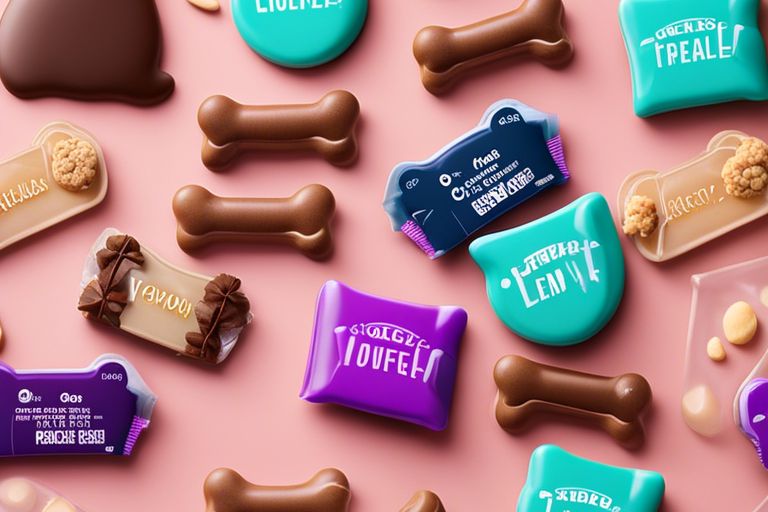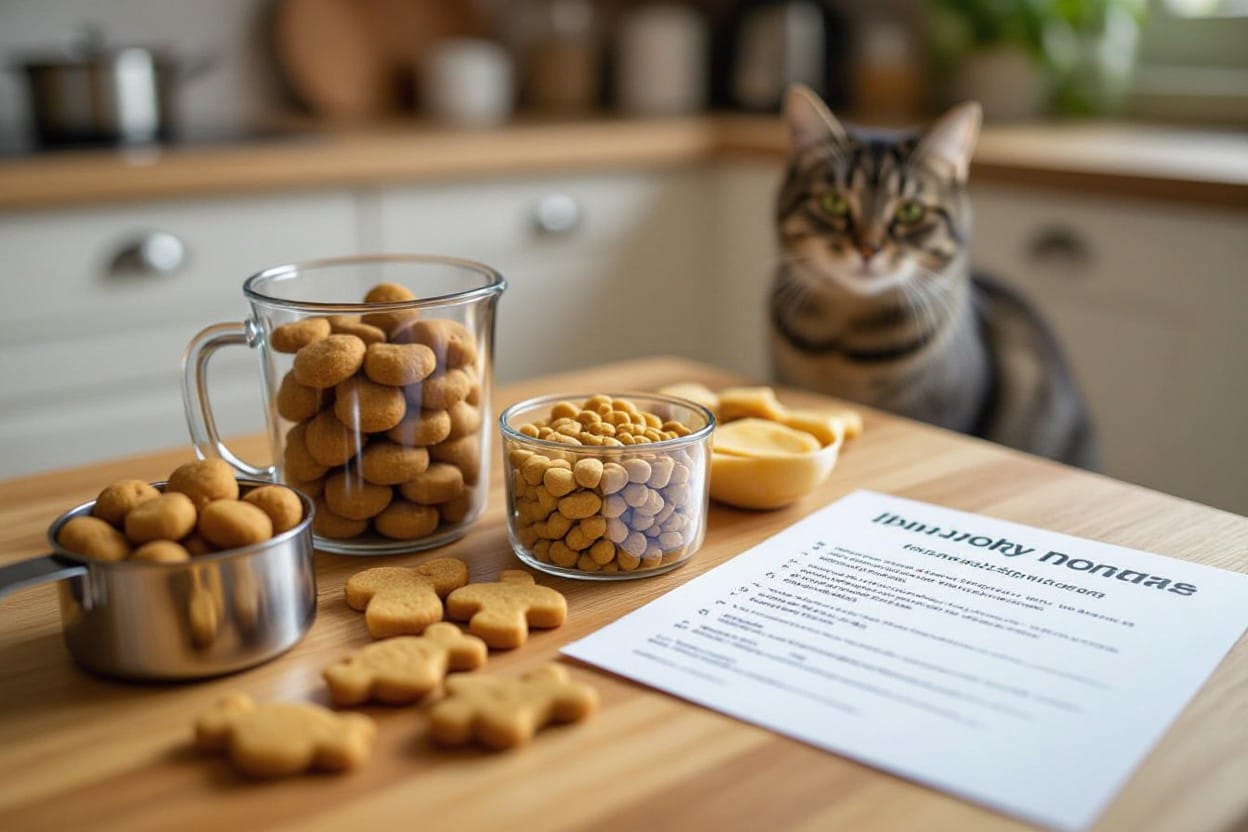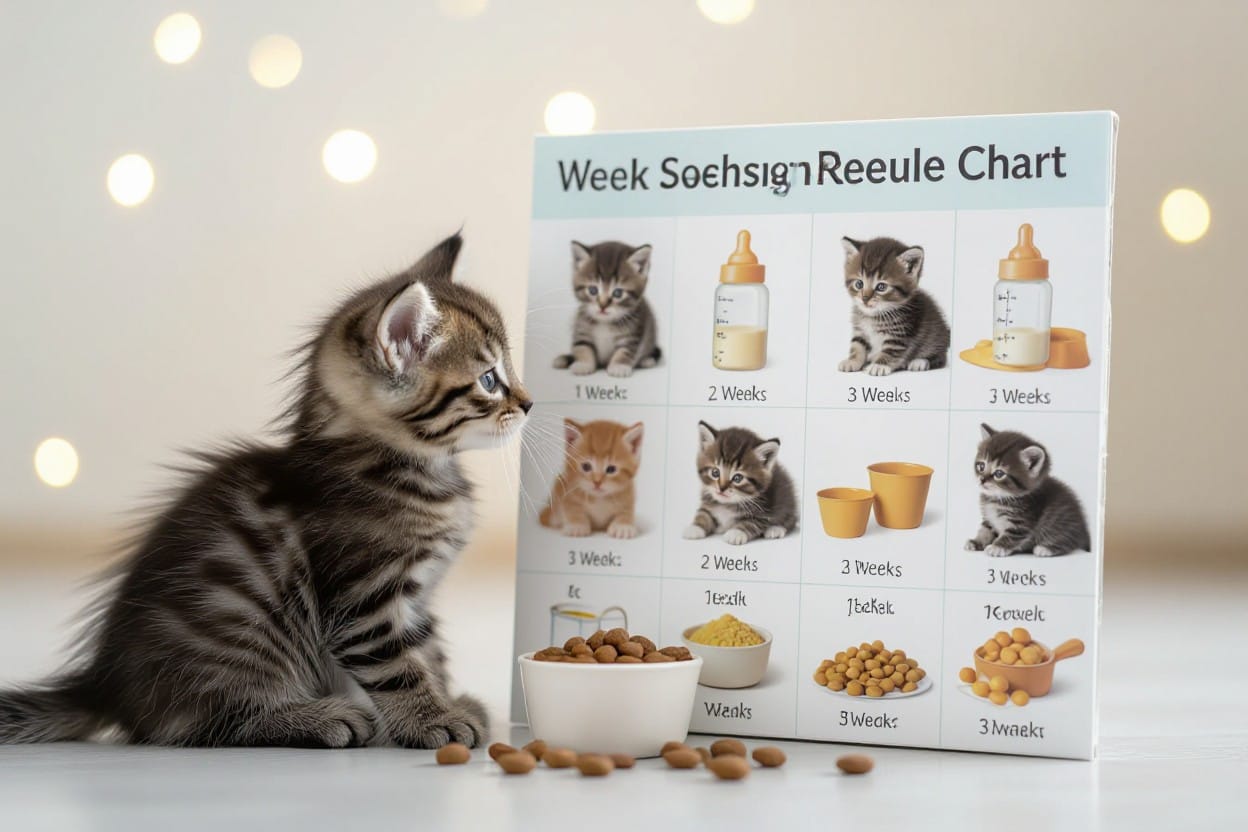You may think all cat treats are the same, but the ingredients used can vary significantly from one product to another. As a cat owner, it is important to understand what goes into the treats you are feeding your feline companion. By familiarizing yourself with the ingredients commonly found in commercial cat treats, you can make more informed choices that align with your cat’s dietary needs and overall health.
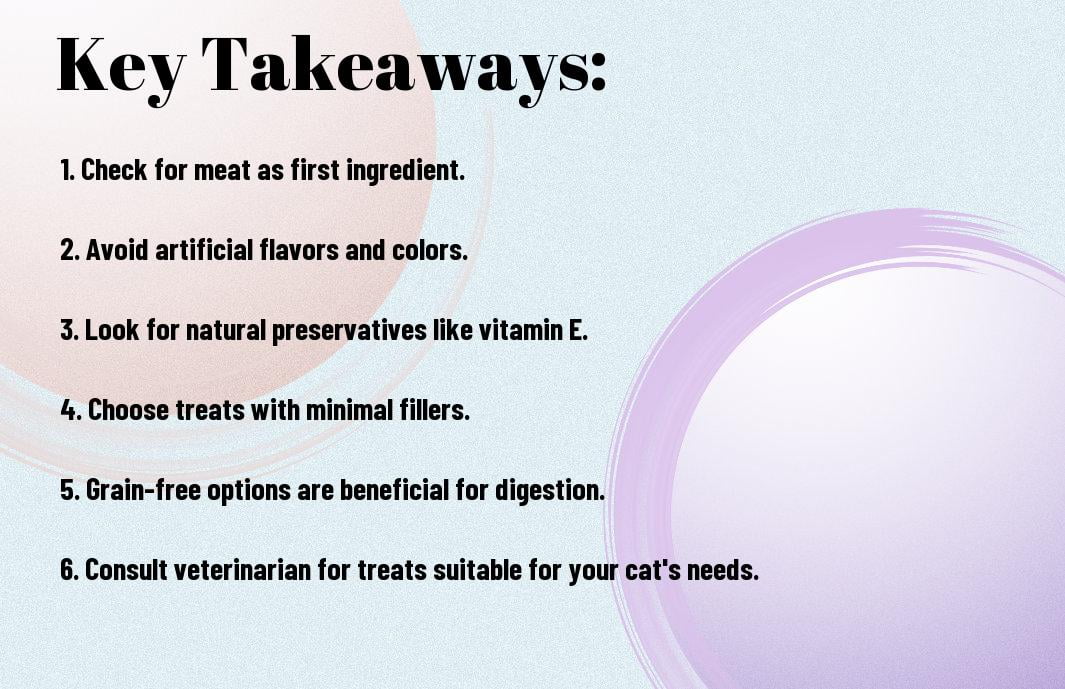
Nutritional Needs of Cats
Even though cats are known for their finicky eating habits, they have specific nutritional requirements that must be met for optimal health. Understanding these requirements can help ensure that your feline friend stays healthy and happy.
Macronutrient Requirements: Proteins, Fats, and Carbohydrates
Macronutrients are the nutrients that cats require in larger quantities to meet their energy needs. Proteins are imperative for cats as they are obligate carnivores, meaning they need meat-based protein sources to thrive. Fats are also crucial for providing energy and supporting various bodily functions, while carbohydrates are not a necessary component of a cat’s diet.
Essential Vitamins and Minerals for Feline Health
Health professionals recommend that cats receive a balanced diet that includes imperative vitamins and minerals to support their overall well-being. These nutrients play vital roles in various biological processes such as maintaining a healthy coat, supporting immune function, and promoting proper growth and development.
For instance, vitamins like A, D, E, and K are fat-soluble vitamins that play important roles in vision, bone health, antioxidant function, and blood clotting. On the other hand, minerals like calcium, phosphorus, and potassium are imperative for maintaining strong bones, teeth, and overall cellular function in cats.
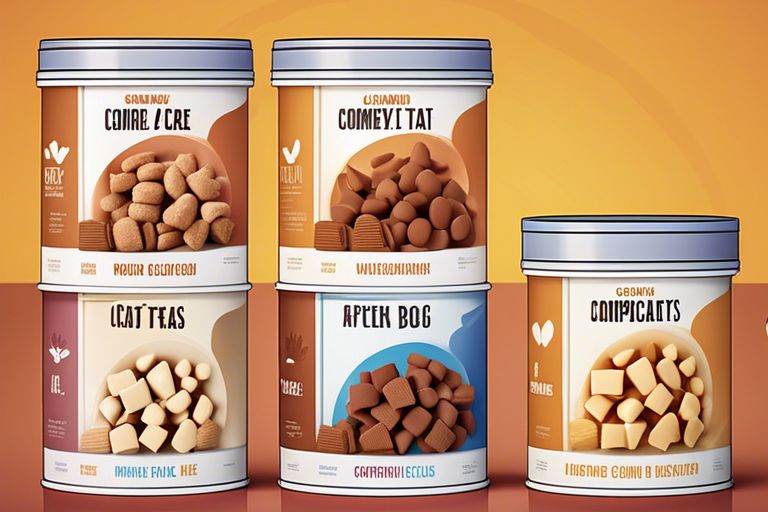
Key Ingredients in Commercial Cat Treats
Clearly, understanding the key ingredients in commercial cat treats is vital for ensuring your feline friend gets the best nutrition possible. By decoding the labels on these treats, you can make informed decisions about what you are feeding your cat.
Common Protein Sources and Their Benefits
Sources: Protein is a crucial component of a cat’s diet as it helps in muscle development and overall health. Common protein sources in commercial cat treats include real meat such as chicken, turkey, fish, and lamb. These high-quality proteins provide vital amino acids that cats need for optimal health and energy.
Fats and Oils: Energy Sources and Tasty Enhancers
Tasty: Fats and oils are not only a concentrated source of energy for cats but also enhance the palatability of treats. Ingredients like poultry fat, fish oil, and sunflower oil are often used in cat treats to provide a balance of Omega-3 and Omega-6 fatty acids, which are beneficial for skin, coat, and overall health.
With the right balance of fats and oils, cat treats can be not only delicious but also nutritious, supporting your cat’s well-being.
Carbohydrates and Fiber: Are They Necessary?
Tasty: While cats are obligate carnivores and do not require carbohydrates in their diet, some commercial cat treats may contain a small amount of carbohydrates and fiber. These ingredients can help in digestion and adding bulk to the treats, making them more satisfying for your cat.
The inclusion of carbohydrates and fiber in cat treats should be minimal and well-tolerated by your cat to prevent any digestive issues.
Artificial Flavors and Preservatives: What Are They?
An important aspect to consider when looking at the ingredients in commercial cat treats is the presence of artificial flavors and preservatives. Artificial additives are used to enhance the taste, appearance, and shelf life of treats, but they may not be the healthiest option for your cat in the long run.
Sources: It is advisable to opt for cat treats with natural ingredients and no artificial additives to ensure your cat is consuming a wholesome and nutritious snack.
Understanding Label Claims
Your cat’s health is important, and as a responsible pet owner, it’s crucial to understand the ingredients in commercial cat treats. Reading and deciphering label claims can help you make informed decisions about the treats you choose for your feline friend.
Deciphering Ingredient Lists: Order of Inclusion
Lists of ingredients on commercial cat treat packaging are required to be listed in descending order by weight. This means that the first few ingredients listed are the most prevalent in the treat. Look out for named protein sources like chicken, lamb, or fish as the primary ingredients, as these are vital for your cat’s nutrition. Avoid treats with fillers like corn, wheat, and soy, as these offer little to no nutritional value for your cat.
Misleading Marketing Terms to Be Aware Of
To ensure that you’re choosing high-quality cat treats, it’s vital to be aware of misleading marketing terms used on packaging. Terms like “natural,” “premium,” and “gourmet” are not regulated and may not guarantee the best ingredients for your cat. Instead, focus on the actual ingredient list and prioritize treats that contain real meat as the main component.
Marketing terms such as “grain-free” or “gluten-free” can also be misleading if they are used to imply that a product is healthier for your cat. While some cats may have specific dietary needs that require these options, it’s vital to remember that grains can also be a valuable source of nutrients for your cat. Always consult with your veterinarian to determine the best diet for your individual cat’s needs.
The Debate Over By-Products and Fillers
Defining By-Products in Cat Food Industry
For pet owners, the mention of by-products in their cat’s treats can often spark concern. By-products are secondary products produced during the manufacturing of primary products. In the cat food industry, by-products typically refer to organ meats, such as liver or lungs, that are nutrient-rich but not commonly consumed by humans. Contrary to popular belief, by-products can be a valuable source of crucial nutrients like protein and vitamins for cats.
The Role of Fillers: Cost-Saving or Nutritious?
Any discussion about fillers in cat treats often revolves around whether they are used for cost-saving purposes or if they offer any nutritional value to felines. Fillers are typically carbohydrates like corn, wheat, or soy that are added to cat treats to provide bulk, texture, or as binding agents. While fillers can help lower production costs, they may not contribute significantly to the nutritional content of the treats.
This raises the question of whether fillers are truly beneficial for cats or if they are simply used as inexpensive bulking agents. Understanding the role of fillers in cat treats can help pet owners make informed decisions about the products they choose for their feline companions.
Health-Conscious Alternatives
Natural and Organic Treat Options
Organic cat treats are becoming increasingly popular as pet owners seek to provide their feline companions with high-quality, natural ingredients. These treats are typically made from wholesome, organic ingredients that are free from artificial additives, colors, and preservatives. They can provide a healthier alternative to conventional commercial treats that may contain fillers and by-products.
Homemade Treats: Pros and Cons
Natural
Pros ConsQuality ingredients May require time and effort to makeCustomizable recipes Potential for ingredient allergiesControl over portion sizes Shorter shelf life than commercial treatsCost-effective option May not have the convenience of store-bought treatsBonding experience with your cat Risk of contamination if not prepared properlyAvoidance of artificial additives
HealthConscious
When considering homemade treats for your cat, it’s crucial to weigh the pros and cons. While homemade treats can offer quality ingredients, customization, and bonding experiences with your feline friend, they may require more time and effort to prepare. Additionally, there’s a risk of ingredient allergies and contamination if the treats are not made and stored properly. Understanding the advantages and disadvantages can help you make an informed decision for your cat’s well-being.
Common Food Allergies and Intolerances in Cats
Unlike dogs, cats have a higher likelihood of developing food allergies or intolerances. Common food allergens for cats include beef, dairy, fish, and poultry. Cats can also develop intolerances to certain ingredients like grains, artificial additives, or preservatives commonly found in commercial cat treats. It is important for cat owners to be aware of these potential triggers to ensure their feline friends stay healthy and happy.
Identifying Potential Allergens in Treats
On the back of cat treat packaging, ingredients are listed in descending order by weight. Look out for common allergens like wheat, soy, corn, and artificial colors or flavors. If your cat has shown signs of food allergies such as vomiting, diarrhea, or skin issues after consuming certain treats, consult with your veterinarian to determine the allergen and consider switching to hypoallergenic options.
How to Choose Hypoallergenic Treats
Hypoallergenic cat treats are formulated with limited ingredients that are less likely to trigger allergic reactions in sensitive cats. When choosing hypoallergenic treats, look for single-source protein options like duck or rabbit, and avoid treats with common allergens such as grains, dairy, or soy. Additionally, opt for treats with natural preservatives and without artificial colors or flavors to minimize the risk of triggering food allergies in your feline companion.
Understanding your cat’s individual dietary needs and potential food sensitivities is crucial in choosing the right treats for them. By being mindful of common allergens, reading ingredient labels, and considering hypoallergenic options, you can help prevent adverse reactions and keep your cat healthy and content.

The Future of Feline Snacking
Innovations in Cat Treat Ingredients
Now, more than ever, pet owners are becoming increasingly conscious of the ingredients that go into their feline companion’s snacks. Innovations in cat treat ingredients are on the rise, with a focus on natural, high-quality ingredients that offer nutritional benefits in addition to taste. Ingredients such as real meat, fruits, and vegetables are becoming more common in commercial cat treats, ensuring that cats receive the best possible nutrition in their snacks.
The Rise of Functional Treats: Beyond Taste
Snacking goes beyond just satisfying a cat’s taste buds; it is also becoming a way to address specific health concerns or provide additional benefits. An increasing number of functional treats are being introduced to the market, targeting issues such as dental health, hairball control, joint support, and even stress relief. These treats are formulated with additional ingredients such as vitamins, minerals, and supplements to cater to the specific needs of cats, making snacking not only enjoyable but also beneficial for their overall well-being.
Treats that serve a dual purpose of offering a tasty reward while also providing health benefits are gaining popularity among pet owners. With the rise of functional treats, cats can now enjoy delicious snacks that also contribute to their health, making snacking a more thoughtful and purposeful experience for both pets and their owners.
To wrap up
Considering all points discussed, understanding the ingredients in commercial cat treats is crucial for providing your feline companion with the best nutrition possible. By being aware of what goes into these treats, you can make informed decisions about which products to choose and ensure that your cat is receiving a balanced diet. Always remember to read the labels carefully, looking out for high-quality protein sources, limited fillers, and minimal additives.
Ultimately, your cat’s health and well-being depend on the choices you make when it comes to their diet. With a better understanding of the ingredients in commercial cat treats, you can make sure that you are offering your furry friend a tasty and nutritious snack that contributes to their overall health. By staying informed and making thoughtful choices, you can help your cat live a long and happy life.
FAQ
Q: Why is it important to understand the ingredients in commercial cat treats?
A: It is crucial to understand the ingredients in commercial cat treats to ensure you are providing your feline friend with a balanced and healthy diet. Knowing the ingredients can help you avoid harmful additives, allergens, or fillers that may have detrimental effects on your cat’s health.
Q: What are some common ingredients found in commercial cat treats?
A: Common ingredients found in commercial cat treats include proteins such as chicken, fish, and turkey, carbohydrates like corn, wheat, and rice, fats, vitamins, and minerals. It’s important to look for treats with high-quality ingredients and avoid those with artificial colors, flavors, or preservatives.
Q: How can I identify high-quality ingredients in commercial cat treats?
A: Look for treats that list a high-quality source of protein as the first ingredient, such as real meat or fish. Avoid treats that contain fillers like corn, wheat, and soy, and opt for those with natural preservatives like vitamin E. Reading the ingredient list and researching unfamiliar ingredients can help you make informed choices.
Q: Are there any ingredients I should avoid in commercial cat treats?
A: Yes, there are some ingredients you should avoid in commercial cat treats, such as artificial colors, flavors, and preservatives, as well as by-products, corn, wheat, and soy. These ingredients offer little to no nutritional value and can potentially harm your cat’s health in the long run.
Q: How can I ensure my cat is receiving a balanced diet from commercial cat treats?
A: To ensure your cat is receiving a balanced diet from commercial cat treats, incorporate them as occasional snacks rather than a primary source of nutrition. Choose treats that complement your cat’s regular diet, and monitor their overall caloric intake to prevent weight gain or nutritional imbalances.
